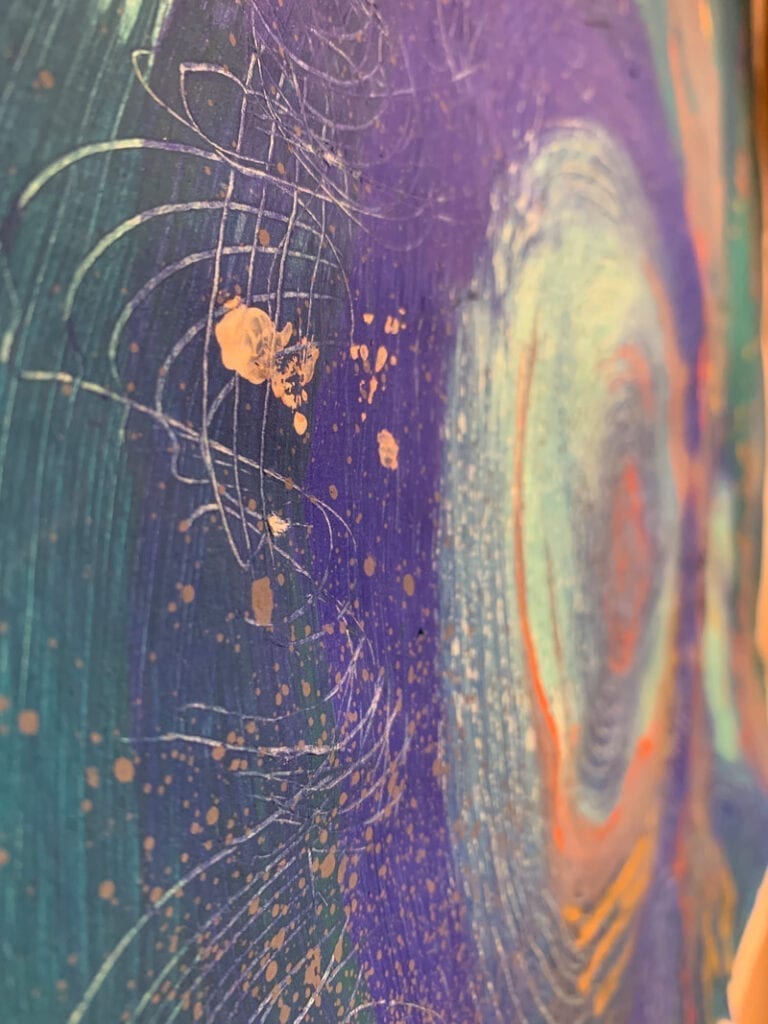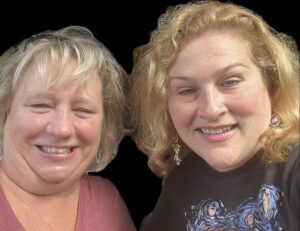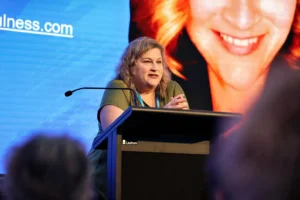The Flash Technique (Manfield, Lovett, Engel, & Manfield, 2017) developed by Dr. Phil Manfield has shown that moving a memory is possible without directly activating a memory or directly reprocessing it. How it happens and what is exactly happening is still up for discussion (See Dr. Ricky Greenwald’s blog HERE, particularly in the discussion section). Nonetheless, I have combined a bunch of ideas and approaches that helps a wide range of clients, particularly, first responders, police officers, vets, victims of crime, and people with addictions. I have also used it to help stabilize someone’s addiction recovery when they find themselves substituting their addictions. It is more than possible that what I am suggesting has been done before but I have not heard of it yet.
I have been searching to find something that can help stabilize someone’s addiction either by stabilizing the symptoms of trauma or the addiction (as if they were separate) through targeting the “addiction memory” (Boening, 2001) as a trauma. What I have found by combining flash technique with Ego State Therapy and a solid conceptualization of addiction in an intensive format helps stabilize both trauma, dissociation, and addiction. I am in full agreement with Dr. Jamie Marich blog (2019) on EMDR 2.5 where a solid understanding of the EMDR protocol combined with various other trauma techniques like titration, pendulation, using fragments, body mapping, and body sensations are helpful in preparing clients for reprocessing, particularly in Phase 2 of EMDR. With that said, what the flash technique has shown me is that it offers something else, in combination with Ego State Therapy, mainly stabilization of the memory system, creates a common goal, and provides access and resources to the unconscious mind. I find that the case conceptualization is particularly important because it provides the rationale needed to stabilize and paired with Ego State Therapy it provides the structure of the psyche. Which can be an unknown to the client at this stage of treatment. The case conceptualization that Dr. Marich and I are producing currently is “Addiction as Dissociation.” You can see an overview HERE.
The flash technique offers these criteria before using it: (1) it is for high impact trauma/high SUDS and (2) be mindful of feeder memories. On the point of feeder memories, I find that this approach helps eliminate that issue to a large degree but you still need to rule out significant dissociation, bi-polar or mania, psychotic symptoms before performing the flash technique as you would in Phase 1 of EMDR.
To me, what the flash technique offers is different from standard resourcing, RDI, or traditional preparation skills like grounding and is more like titration and pendulation.
Standard EMDR preparation skills like safe/calm place, container, healing light, or butterfly hug do not require accessing or activation of traumatic memories, however, it can happen with more complex presentations. From my understanding, titration and pendulation in the resourcing and preparation phase 2 is about working with painful material but in moderation. This is where preparation/resourcing 2.5 comes in to play. Dr. Marich’s point, besides that we should cautious of the latest fades, holds that because titration and pendulation do similar things to the flash technique. I fully agree because body awareness is powerful and allows the clients to gain experience holding the pain in their physical awareness. However, the flash technique does not require this. Titration and pendulation provide a “toe in the water” process, whereas the flash technique does not. However, clients still needs body awareness to reprocess so 2.5 skills will still have to be done as well before moving forward in the phases of EMDR and for EMDR to be the most effective.
There are some other aspects that the Flash Technique is different from standard resourcing, titration, and pendulation.
1) In Dr. Ricky Greenwald’s blog, and quoting Bruce Ecker in the discussion section, the flash technique may be taking out some of the fear of addressing the memory. I think this is where titration and pendulation are similar but direct contact with the overwhelming experience is not required in the flash technique.
2) By pairing the distressing memories with a positive place provides the opportunity for discord, which memory reconsolidation requires (Ecker, Ticic, & Hulley, 2012). Activation was also thought to be required in memory reconsolidation but this is what makes the flash technique different and possibly new.
3) Dual Attention Stimulus is used in Flash Technique and not typically in titration and pendulation.
4) Subliminal suggestions are powerful (just look at advertising) and when the memories are put on the back burner (possibly working memory) and a more positive experience is focused on, it appears that some shift in where the memory is stored is able to happen without activation. From my experience with this bulk format, when the more unconscious ego states are ready to let go of the pain of the traumas and have connected to the meeting area, they will let go. They feel more empowered to take on their stuff. Presentations where people are consciously or unconsciously bonded to their traumas, which are particularly in more shame-based presentation and developmental traumas, then memories are not going to move until there is cohesion in the ego state meeting area. However, the flash technique is not typically for these types of traumas and where titration and pendulation can be more helpful.
Where the flash technique is different is that it appears moves the memory… or memories as I found out about a year ago while working with a first responder and they said, “there are like 9 calls that stay with me still that are off the chart.” Ever curious, I thought about a bulk option.
What I am presenting here in the scripts below is an ideal and mostly general because each session is individual to the client. I do suggest consultation around this, particularly if is not clear. There is a level of finesse in this approach and it is not something that someone can teach per say because it is based on felt experience. This felt experience is based on the dual attunement that is critical to use as a guide. I have taught a handful of consultees this bulk technique,” who were first trained by Dr. Phil Manfield in the technique. “Bulk Flash,” as I am calling it, has gotten a similar response when they used it. I have done it with a dozen or so clients that I have used it and I am now offering it here to help others. For me, I have been using it to help first responders continue their work and to stabilize active addictions, which is quite promising.
Before you read further, you will need to know and feel comfortable with Ego State Therapy (or IFS), and the Theory of Structural Dissociation. I do not go into it too much here because it would be too much to cover. I do suggest Robin Shapiro’s Easy Ego State Interventions, Sandra Paulsen’s: When There are No Words and Looking Through the Eyes, Andrew Sheubert’s use of his RUG-C, Shirley Jean Schmidt’s: Development Needs and Meeting Strategy (DNMS), and Dissociation and Addiction Resources page with Institute for Creative Mindfulness.
Here is the set-up with some reasoning sprinkled in:
After the conscious intake, I do an unconscious intake by doing the dissociative meeting area based on Dissociative Table by Watkins and Watkins (1997) with every client. Whether it is metaphorical, analogous, or actual the ego state meeting area is a part of the clients lived experience one way or another, whether they are conscious of it or not. A main point of the meeting area is to see how conscious the client is of their unconscious process, let alone, how willing they are to go there. Another way of putting it is: the meeting area also helps see how willing the unconscious is to let them in.
What the ego state meeting area represents to me is a look into the psyche or “looking under the hood.” The aspects of self that present (and who don’t originally present) in the meeting area are what make this person, this person. The meeting area also allows them to see this aspect of themselves too, at least their conscious mind. This is a big moment for the conscious mind. This is how the “Eureka” moments work; the conscious aspects of the mind realizes what the unconscious has been saying all these years. The experiences and non-experiences alike that the client holds, have made them who they are today and I know that I am not only talking to the person that is sitting in front of me; I know that I am talking to every person they have ever been. Who they have been can hold the encapsulated memories (Scaer, 2010) of what happened to them. Or another way of saying it, they are personifications of those held traumatic experiences. All trauma impacts temporal time and space. Untreated trauma continues that trend to the point that the core beliefs and the emotion felt still stay with the person and is usually fragmented. However, as we know the body keeps the score. Trauma separates us because there was a before, during, and after a traumatic event so everyone who experiences trauma can feel a sense of separateness until it is resolved.
I offer this to clients: “I know that I am not only talking to the person that is sitting in front of me. I know that I am talking to every person you, you have ever been. I would like the yous that you have been to have opportunity to get the therapy that they did not get at the time.”
I then ask, “Where would be a comfortable place for you to meet who you have been?” “A meeting of the minds so to speak.”
This is a continuation of the assessment phase, meaning that I am looking to see how aware they are of their processes/who or what parts of them shows up. If and when there appears to be an understanding of the parts and their purpose (I use RUG-C or DNMS a lot here), I move forward by filling out the space by making it real with descriptions and see who shows up. If no one shows, then consider the broad spectrum of dissociation and do psycho-education and body awareness…)
I then ask, “Does it feel like any part of you is missing?”… “Or does it feel like there are parts that may be curious but are not ready to join quite yet?”
(If there are parts missing then suggest that this is the opportunity for them to listen, if they can and want to.)
I welcome any part that may be on the periphery to come in when they feel comfortable. Here I prepare to teach the container with psycho-education about the brain. For instance, the first five minutes of the movie Inside Out is extremely helpful here. I offer the clients and parts to fill the container (without eye movements for now) with the old memories that feel like they are still staying. I suggest that it is like a library, in such that there may be volumes of books or like a movie collection. I offer them to put any old tapes/movies of past experiences that they would like to put into the container, to put them there. I also offer around this time “that this is a space for the kids to be kids and adults to be adults.” Once everything is put away, I ask “is there any feeling that comes up as a result of having some separation from the bad experiences?” “Where do you feel it in your body?” (I will do a resource install or Brainspotting Resource Spot here, when appropriate). I then suggest that the client can put the container in waiting room like the flash technique offers. But before it is put away, I will then ask them (or really the conscious self), without opening any of them, “How many are there?” and then “How big are the volumes?” Just take note of them.
Then I set-up the flash/blink with a moment of joy and do the flash technique.
What I have found is that, after doing the first round of flash/blink, what was once 15 volumes are now 3-5 volumes and the parts that did not present earlier, start presenting more. I ask about body shifts and have them simply notice it. I do the flash technique again and check in with the meeting area to see what they might be noticing. I then have them check the volumes again. Usually it stays around 3-5 and the SUDS is significantly less. Clients also report that the volumes feel lighter, are smaller, and/or are more distant. They also report that the parts are lighter and more engaged. Sometimes the backdrop of the meeting area has lightened up, distance has been decreased, and more interaction is available. Utilizing Paulsen’s concept of building Ego strength, here is where to do it through relationship building and conflict resolution.
Some bullet points to consider from my experience of doing this so far…
1)This may become their “safe place.”
2)You may have to create a more separate work environment, suggested in the dissociative table were one can combine their efforts towards their treatment goals.
3)At some point, when appropriate, the future self/recovery self as a way of the client seeing what their long-term goals are, to increase motivation, and provide an adult to be present for the younger versions.
4)If the person is bonded or addicted to their traumatic memories, as Van der Kolk has suggested in several writings () there will be mixed emotions about letting things go. Utilize Motivational Interviewing with the parts. Understanding how addiction presents in mental health and how to treat it will help the client successfully complete treatment.
5)Borderline clients, from my experience, tend to avoid establishing the meeting area so more resourcing is needed to establish the meeting area.
6)I mostly do what I have presented here in a 4-hour intensive session.
Next, I will more than likely go into the Toxic Shame: Shape and Color Set-up that I have written about. See my blog post: HERE. I then do into their traumas in a chronological fashion, unless there is a reason not to. For addiction: I make sure that I targeted their “addiction memory” with the standard protocol with the one minor alteration as outline in a previous blog that I did. You can access it: HERE.
The long and short of it is that I find that once the inner children have the space to be kids, without the responsibility of being in charge of the outcomes of life, and they can trust the adult in charge, they tend to let go of their stuff without direct reprocessing. I do go back and check in on all of their memories over the course of treatment but often times now that they have their inner-children, they are good to go for a while. You still want to process all of the memories as Flash Technique suggests.
Complex PTSD is complex because of the dissociation profile involved (which includes addictions). I have found that this is a great start for clients to build off of because now clients have a conscious awareness of the psyche structure to work with and a conceptualization that validates their unconscious processes. This makes sense because when the unconscious separation and alienation that trauma causes becomes a conscious unified front, people feel more connected to their treatment goals and whole to their purpose in life. Taking the sting out of therapy with the flash technique helps clients start to put the memories where they need to be in order for adaptive mindset and lifestyle to take root.

A Case for Phase 1a and 1b
I often tell my EMDR Therapy students that if I had it my way, I would place EMDR Therapy Phase 2 (Preparation) before EMDR Therapy




One Response
Would love to see this method in action over video. Great technique that I will consider using. thanks.